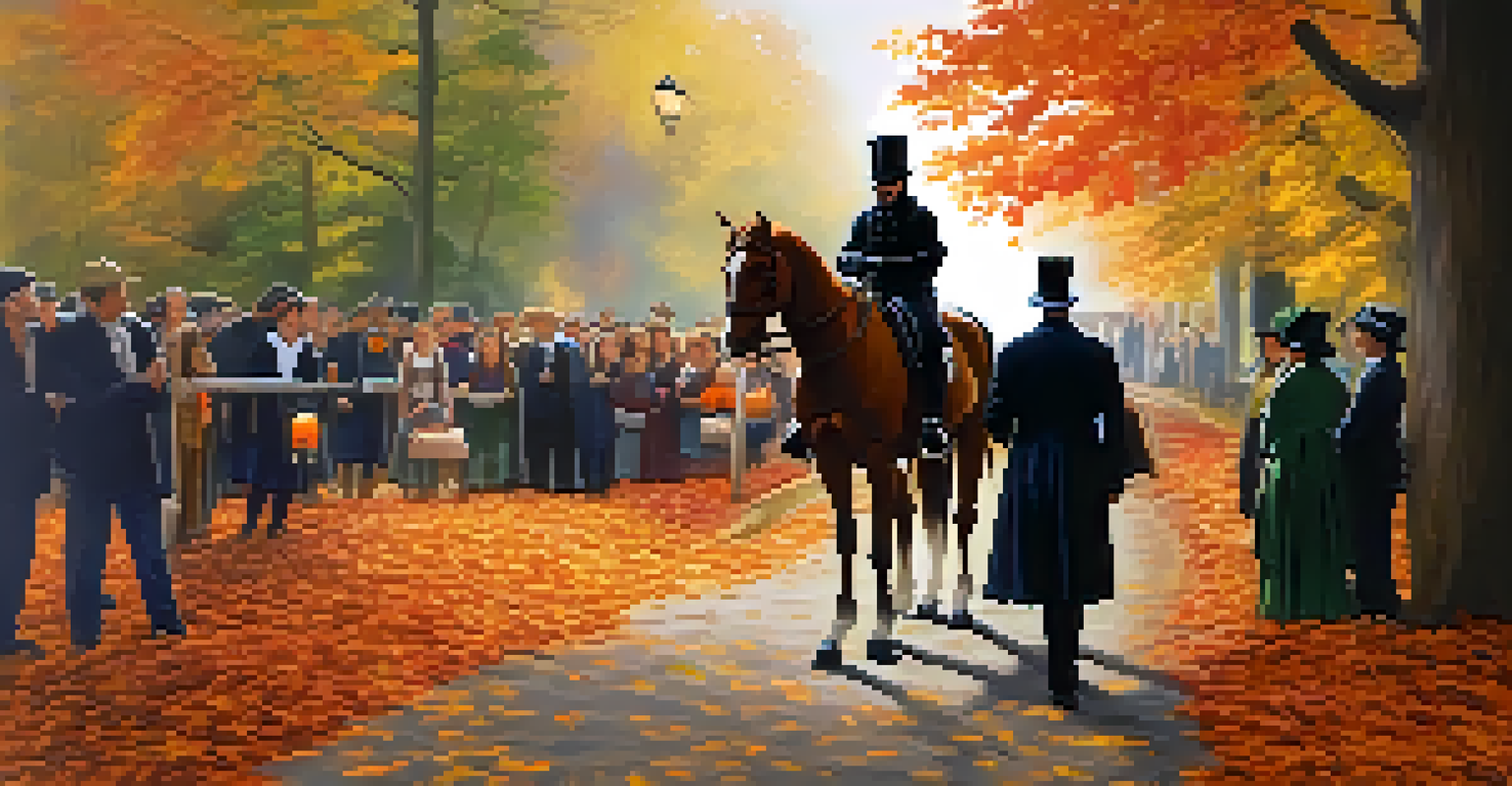Legends and Myths: Attracting Tourists through Local Narratives

The Power of Stories in Tourism Development
Stories are the lifeblood of culture, offering a unique way to connect with visitors. They create a sense of place, making a destination memorable and engaging. When tourists hear about local legends, they are often drawn in, eager to experience the magic behind the narrative.
Stories are a communal currency of humanity.
For example, think of how many people visit Transylvania, not just for its stunning landscapes, but for the allure of Dracula's legend. Such stories not only enhance the appeal of a location but also foster a deeper appreciation for its history and traditions.
By weaving these narratives into the tourism experience, we create opportunities for local communities to thrive economically, while simultaneously preserving their cultural heritage. This symbiotic relationship is crucial for sustainable tourism.
Local Legends: Bridging Past and Present
Local legends often serve as cultural touchstones, linking the past with the present. They encapsulate historical events, beliefs, and values, giving tourists a glimpse into the community's identity. When visitors engage with these stories, they gain a richer understanding of the locale's heritage.

Take the tale of the Headless Horseman in Sleepy Hollow, New York. Tourists flock to experience the eerie enchantment of this legend, which has roots in American folklore. Such narratives not only attract visitors but also instill pride among locals who cherish their unique history.
Stories Enhance Tourism Appeal
Integrating local narratives into tourism experiences creates memorable connections for visitors and fosters appreciation for cultural heritage.
In this way, legends become living narratives that evolve over time, allowing communities to reinterpret their past while embracing the future. This dynamic process fosters a deeper connection between residents and tourists alike.
Myths as Marketing Tools for Destinations
In the world of tourism, myths can be powerful marketing tools. They create intrigue and allure, encouraging travelers to explore destinations that promise adventure and discovery. Incorporating myths into promotional materials can enhance a location's appeal.
The more you know about your destination, the more you can connect with it.
Consider the Hawaiian myth of Pele, the goddess of volcanoes. Tourists are often inspired to visit the islands to witness the stunning landscapes shaped by her fiery spirit. By highlighting such myths in marketing campaigns, destinations can captivate potential visitors.
Furthermore, presenting myths can lead to unique experiences, like guided tours that delve into the stories behind the scenery. This not only enriches the visitor experience but also promotes local businesses, creating a win-win scenario for all parties involved.
Community Engagement: The Heart of Storytelling
Engaging the local community in storytelling is essential for authenticity. Residents often have the most compelling insights and interpretations of their legends, making their involvement invaluable. When locals share their narratives, it fosters a sense of ownership and pride.
For instance, community-led tours in New Orleans often feature tales of voodoo and jazz legends told by local guides. This authentic storytelling creates a more immersive experience for tourists, allowing them to connect with the culture on a personal level.
Community Involvement is Key
Engaging local residents in storytelling ensures authenticity and enriches the visitor experience, while preserving cultural traditions.
Moreover, involving the community helps to preserve these stories for future generations. By passing down legends, communities ensure that their cultural heritage remains vibrant and relevant, enriching the tourism experience along the way.
Creating Interactive Experiences Around Legends
Interactive experiences can make legends come alive for tourists. By engaging visitors through activities like reenactments, guided tours, or workshops, destinations can create memorable encounters. This hands-on approach deepens the connection between tourists and local narratives.
For example, a guided ghost tour that explores haunted locations can provide a thrilling experience while sharing local myths. Visitors not only hear the stories but feel the excitement of being part of the legend themselves.
Such experiences encourage tourists to share their adventures on social media, further promoting the destination. In this digital age, word-of-mouth has never been more powerful, making interactive storytelling an essential tool for tourism.
Preserving Legends: A Responsibility for Tourism
As tourism grows, so does the responsibility to preserve local legends. It's essential to approach these narratives with respect and understanding, ensuring they are told accurately and thoughtfully. Misrepresentation can dilute their significance and harm community sentiments.
For instance, when showcasing indigenous myths, it's crucial to involve the community in the storytelling process. This ensures that the narratives remain authentic and honor the cultural significance they hold.
Legends as Marketing Tools
Utilizing myths in promotional efforts captivates potential travelers, encouraging them to explore destinations through unique narratives.
By prioritizing preservation, tourism can contribute to the sustainability of local cultures. This not only benefits the community but enriches the visitor experience, leading to more meaningful engagement.
The Future of Tourism: Legends and Myths
Looking ahead, the integration of legends and myths into tourism is likely to grow. As travelers increasingly seek authentic experiences, stories that resonate deeply with local culture will become even more relevant. Destinations that embrace this trend will stand out in a competitive market.
Innovative approaches, such as virtual reality experiences based on local legends, could transform how visitors engage with these narratives. This technology can transport tourists into the heart of a legend, creating unforgettable memories.

Ultimately, the future of tourism lies in the stories we tell and how we share them. By prioritizing local narratives, we can create a tourism landscape that is not only economically viable but also culturally enriching.